Last Updated on March 11, 2024 by teamobn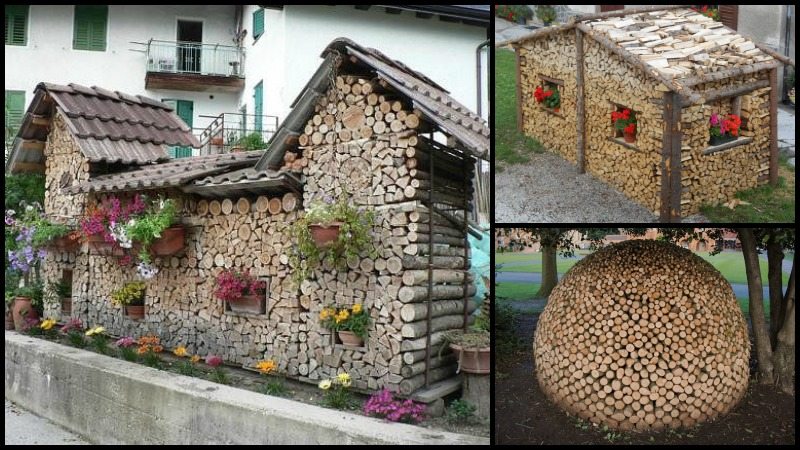
Love campfires? You must have a pile of firewood or a huge log outside., but is your firewood holder/rack enough to hold them? Then you might have simply stacked them in one corner of your yard. But there’s a lot more you can do with a heap of wood!
Wood stacking is a lot like putting together puzzles. First, you decide what shape you want the pile of wood to be, then you need to fit the pieces of wood together. This is a fun project that lets you be creative.
You can create several kinds of artwork with a mountain of wood to decorate your backyard.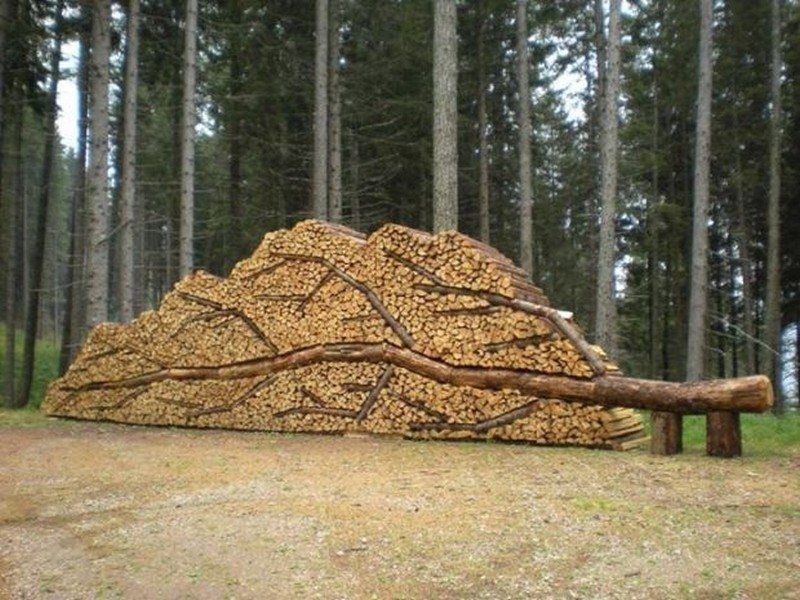
Generally, there are two types of firewoods, hardwood, and softwood. Hardwood is made up of oaks, beeches, maples, and eucalyptus trees. Softwood is made up of pine trees and is a softer wood.
Hardwood will burn longer and hotter than softwood, but softwood is less expensive. For this reason, we usually stack hardwood on the bottom and softwood on top.
Wood Stacking can lead to several issues. There are many different types of firewood available, and not all of it is completely dry. Stacking wet firewood will lead to mould and rot.
Rotting firewood will produce fungi and moulds that can be harmful to your health. When you are stacking firewood, make sure you are stacking the wood correctly. You want the areas of the wood that do not touch to be drying out.
You also want to make sure that the wood is stacked in a way that air can circulate it. So while your stack of wood is out there to dry, why not decorate and bring your backyard to life by creating art with them, too!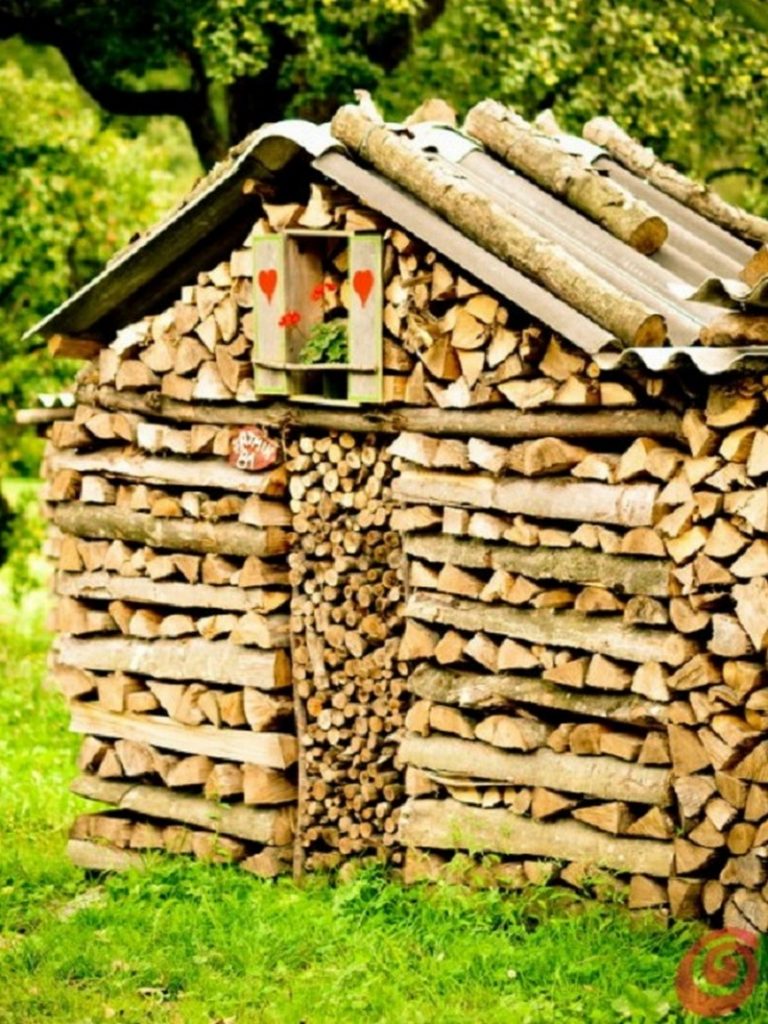
Some require a certain level of artistic skill such as making a portrait. It involves painting more than stacking and is usually made as a permanent kind of art of wood stacking.
If you have the talent (and lots and lots of wood at your disposal) and you do want a permanent feature in your backyard, why not?
But what you see in our albums below is an art of wood stacking that anybody can make themselves!
More importantly, the wood pieces in these examples are easy to take out should you need to use them for the fireplace… OK, we admit – some may be hard to utilize, but only because they are too beautiful to ‘destroy’! 😉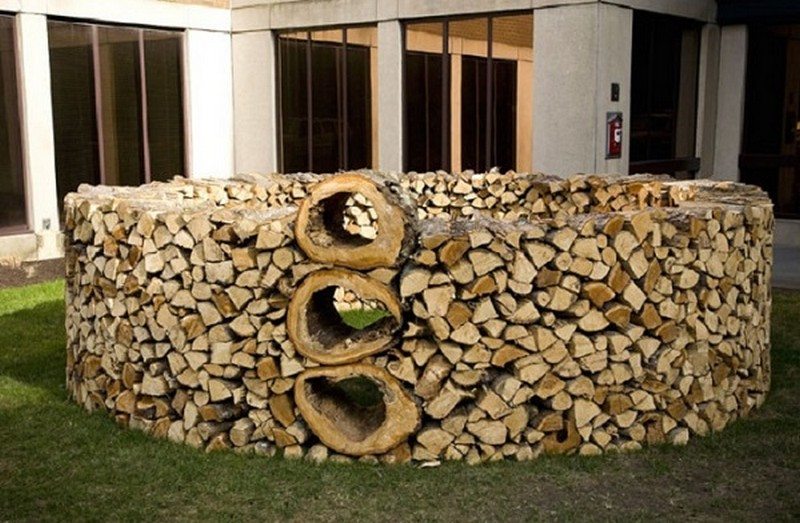
Wood stacking will depend on how you want it, whether it is temporary or permanent, but mostly it’s temporary because you might be utilizing as much as you need to.
Think you have enough pieces to create one of these wood stacking art?
Click on any image to start the lightbox display. Use your Esc key to close the lightbox. You can also view the images as a slideshow if you prefer ![]()
The Intricate Art of Wood Stacking
In the heart of wooded realms, where the whispers of ancient trees mingle with the songs of birds, lies a mesmerizing art form that transcends the ordinary. It’s the intricate dance of wood stacking, a practice that weaves together the raw beauty of timber into captivating sculptures and structures that seem to defy gravity.
From humble woodpiles to towering installations, the art of wood stacking is a celebration of creativity, balance, and the timeless allure of the natural world. Join me as we journey through the enchanting realm of wood stacking, where every log tells a story and every arrangement is a testament to the boundless creativity of human hands.
Embracing Nature’s Bounty
The art of wood stacking is a celebration of nature’s bounty—a homage to the majestic trees that populate our forests and woodlands. Each log used in the art of wood stacking carries with it the history of the forest, from the moment it first sprouted from the earth to the day it was felled by human hands.
Artisans who practice this craft understand the sacredness of wood and approach their work with reverence, carefully selecting and arranging logs to showcase the inherent beauty of the timber.
The Dance of Balance
Central to the art of wood stacking is the delicate dance of balance—a harmonious interplay of form and function, structure and aesthetics. Every log must be carefully positioned and aligned to create a sense of equilibrium, ensuring that the entire composition remains stable and cohesive.
The art of wood stacking a process that requires patience, precision, and a keen eye for detail, as artisans meticulously arrange logs of varying shapes and sizes to create captivating patterns and shapes.
From Function to Form
While wood stacking has practical origins—dating back to ancient times when humans relied on wood for fuel, shelter, and sustenance—it has evolved into a true art form that transcends utility. Today, artisans use the art of wood stacking to create stunning sculptures, architectural installations, and outdoor artworks that captivate the imagination and inspire awe.
From intricate log cabins to towering totems, the possibilities are as endless as the imagination itself.
Finding Beauty in Imperfection
One of the most enchanting aspects of the art of wood stacking is its embrace of imperfection. Unlike other art forms that strive for flawless precision, wood stacking celebrates the natural irregularities and quirks of timber. Knots, cracks, and weathering are not flaws to be hidden but rather cherished as unique characteristics that add depth and character to the finished piece.
It’s a reminder that beauty can be found in the imperfect and the unexpected, inviting viewers to see the world through a different lens.
Sculpting the Landscape
Wood stacking is not just about creating objects—it’s about sculpting the landscape itself, reshaping the natural world in ways that surprise and delight. Whether it’s a whimsical garden sculpture, a labyrinthine maze, or a grand archway, wood stacking has the power to transform ordinary spaces into enchanted realms where imagination knows no bounds.
As viewers wander through these living artworks, they are transported to a realm where nature and art intertwine, blurring the boundaries between the man-made and the wild.
In the hands of skilled artisans, wood stacking becomes more than just a craft—it becomes a form of storytelling, a way of connecting with the land and honouring the spirit of the forest. From its humble beginnings as a practical necessity to its modern incarnation as a true art form, the intricate dance of wood stacking continues to captivate and inspire, inviting us to see the world through new eyes and discover beauty in the most unexpected of places.
So let us embrace the art of of wood stacking, and may its enchanting allure continue to shape our world for generations to come.
6 Examples of Creative Wood Stacking
Owl by Gary Tallman
It has been a good year for local artist Gary Tallman. His latest creation is a wood-stacking art piece that stands over 12 feet high. It is in the shape of an owl and is located in the front yard of Sheridan Media.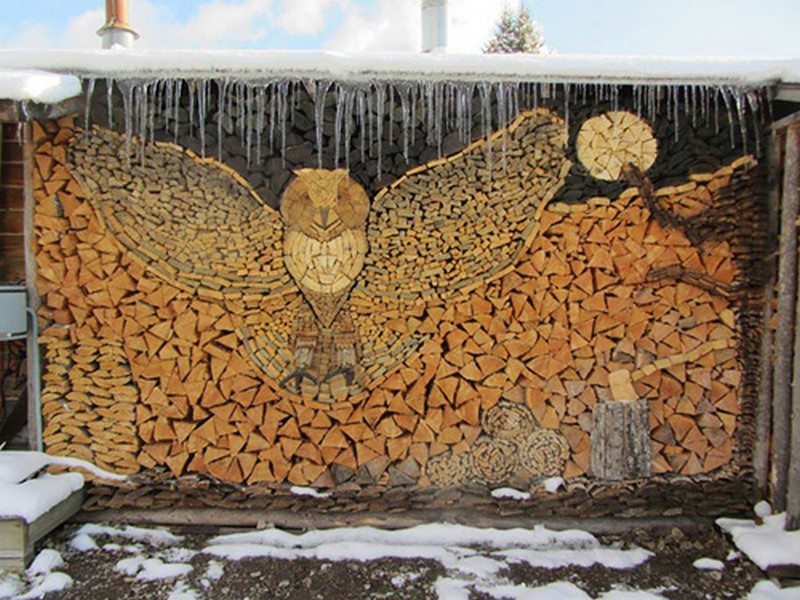
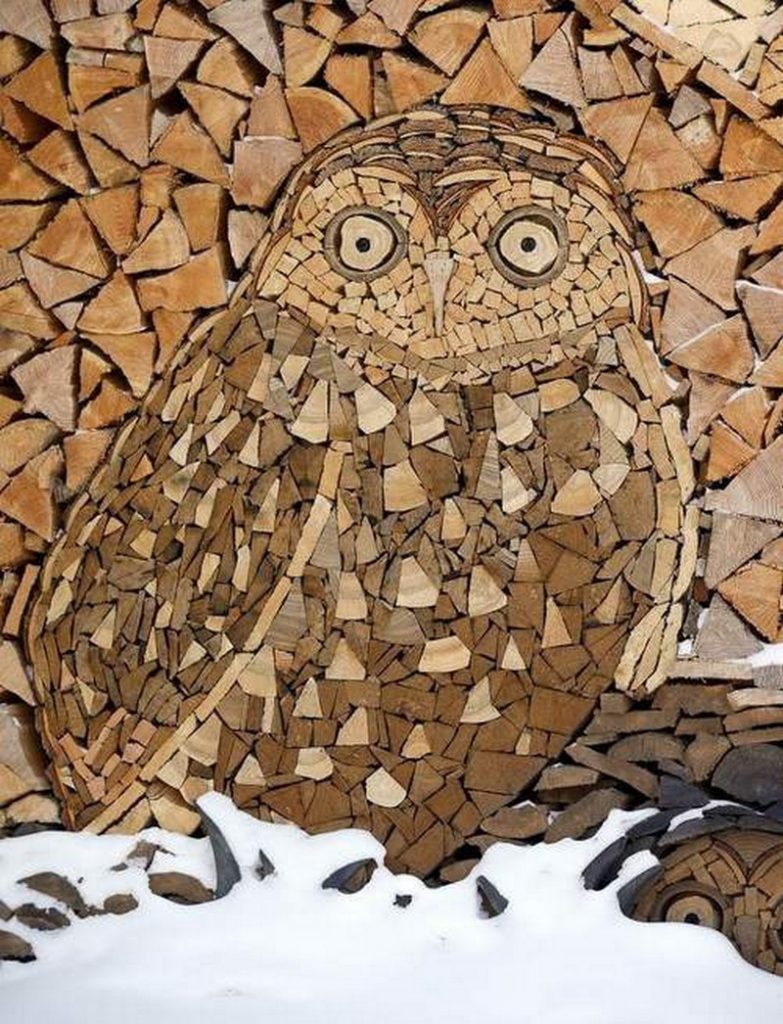
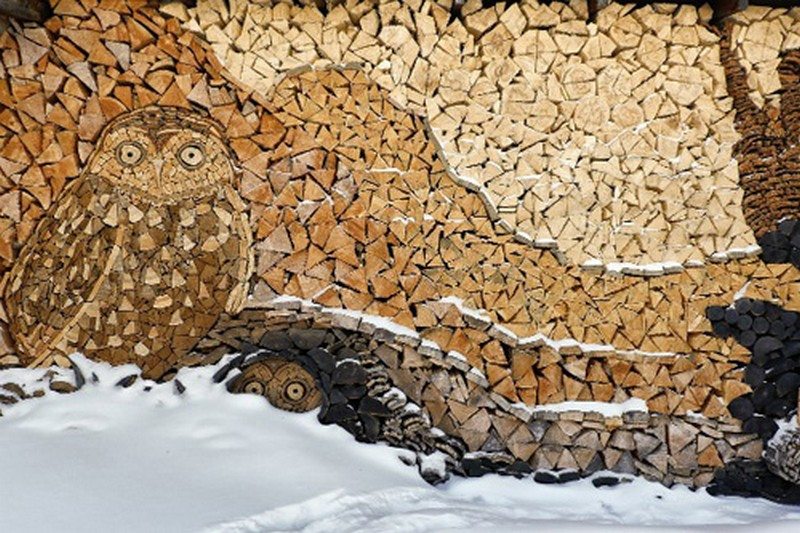
Fallen Trees
Ever thought of utilizing fallen trees? Check out these wood stacking ideas using one!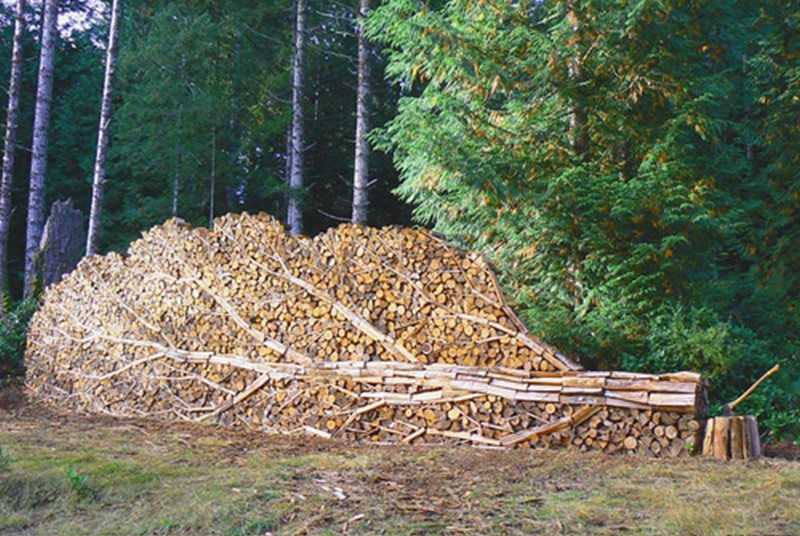

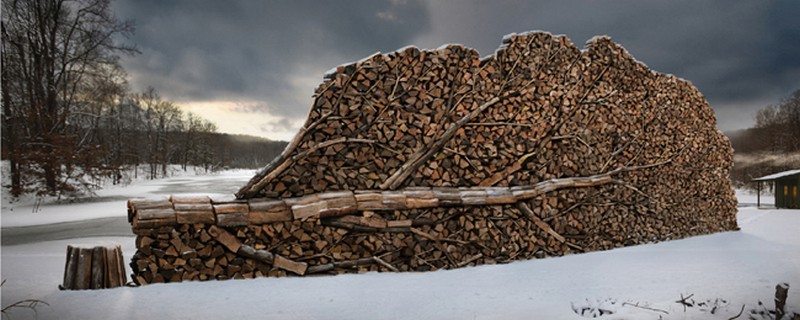
Tiny Houses
Creating tiny houses is also a great wood stacking idea!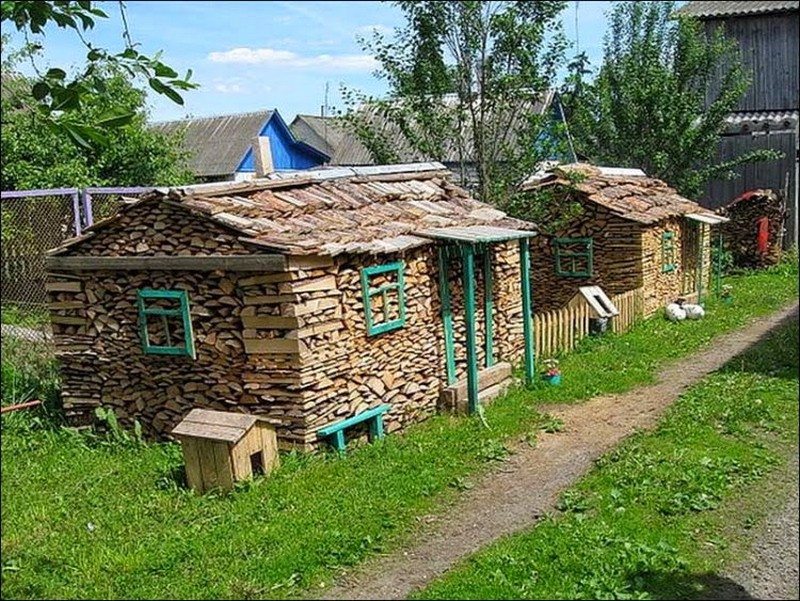
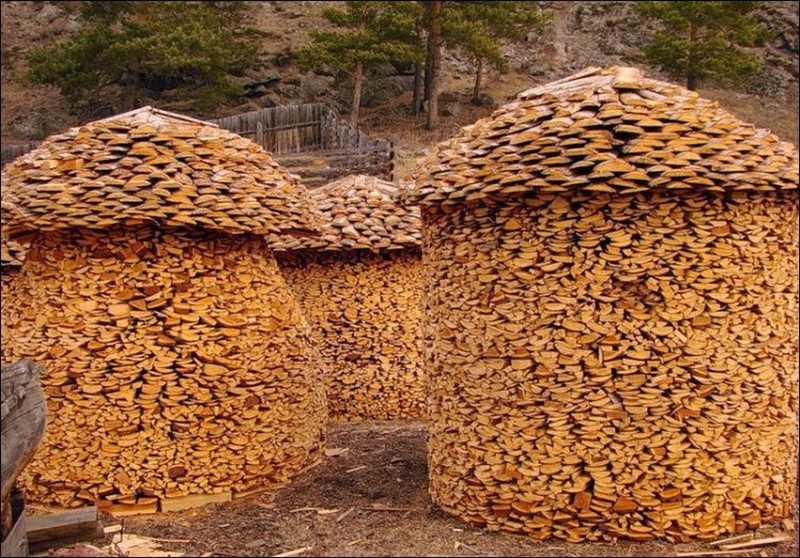

Interesting Structures
Have you ever thought of stacking your firewoods this way? It will give a unique and artistic look to your backyard! It will definitely be a head-turner!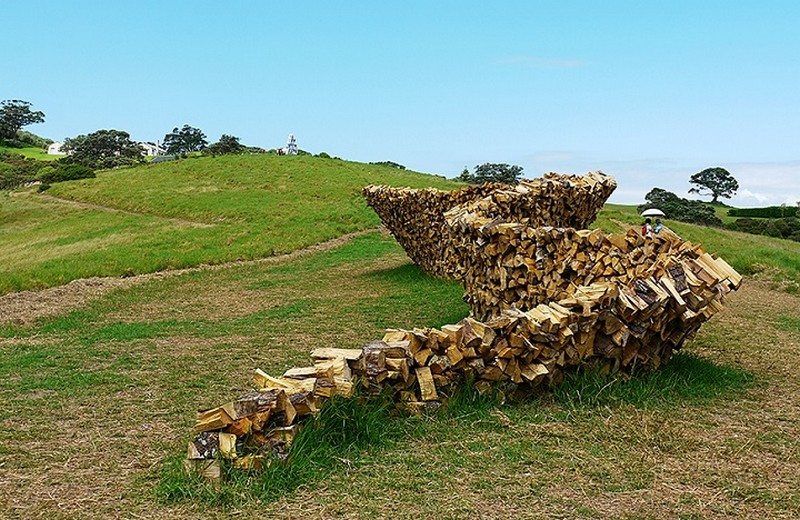
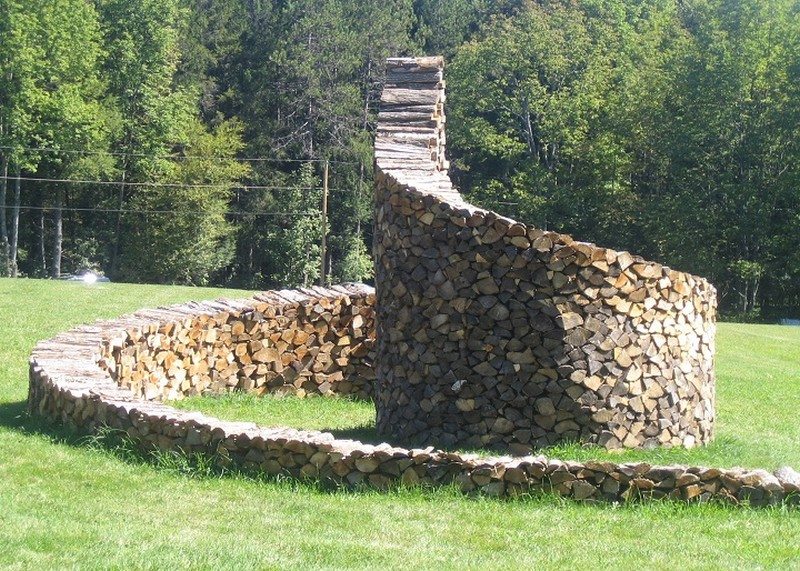

Wood Stacking with Practical Uses
You may also want to stack your firewoods practically. . 🙂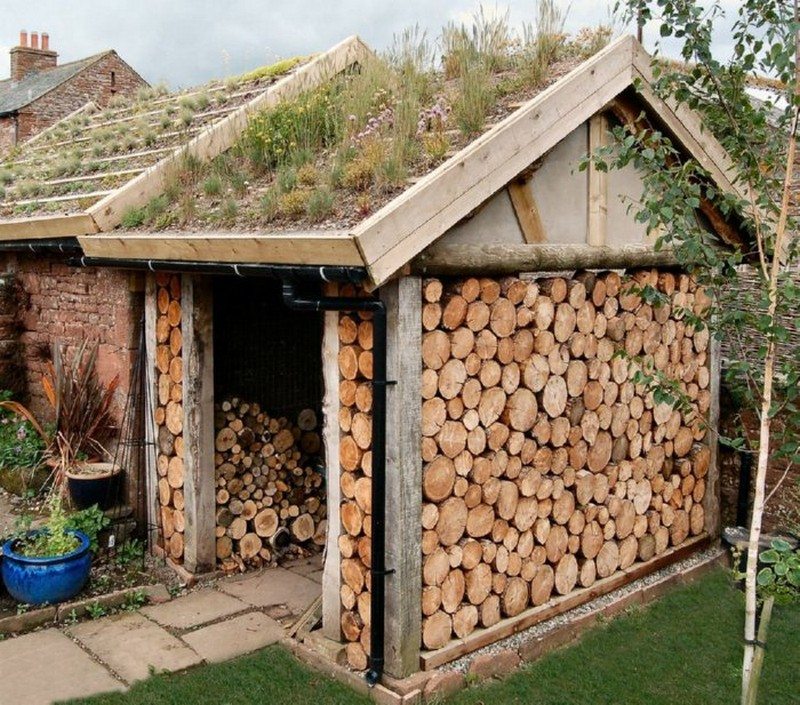
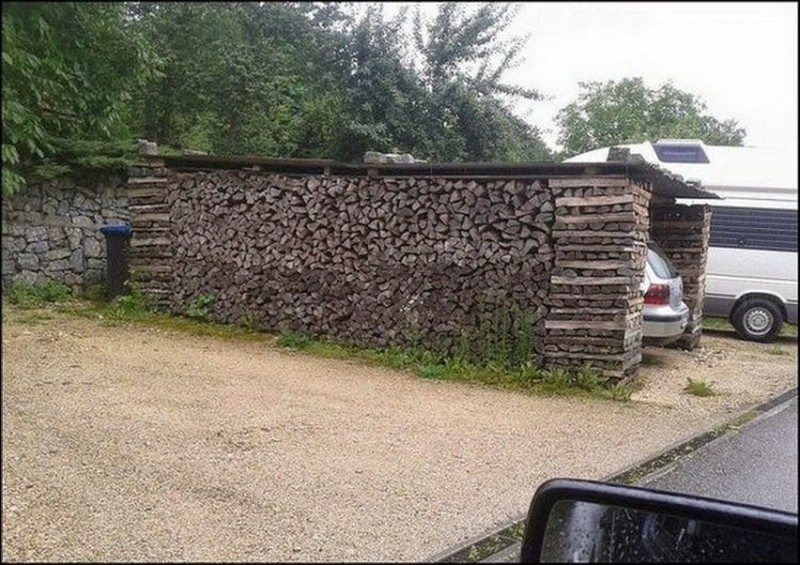
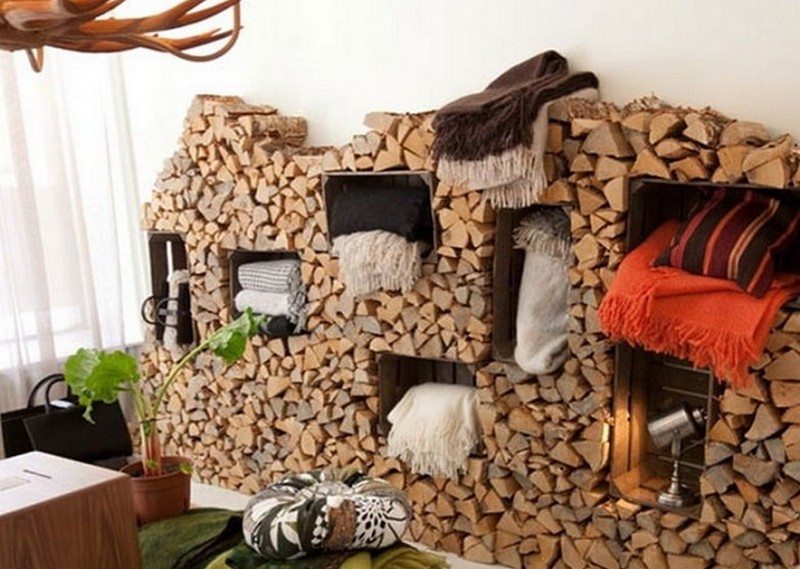
Wall with Flowers
Experimenting with flowers and firewoods is a great choice!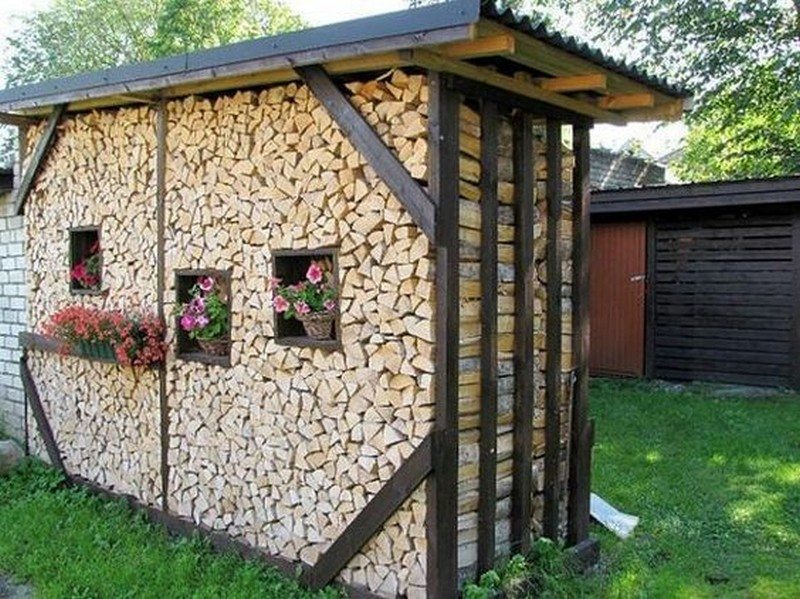
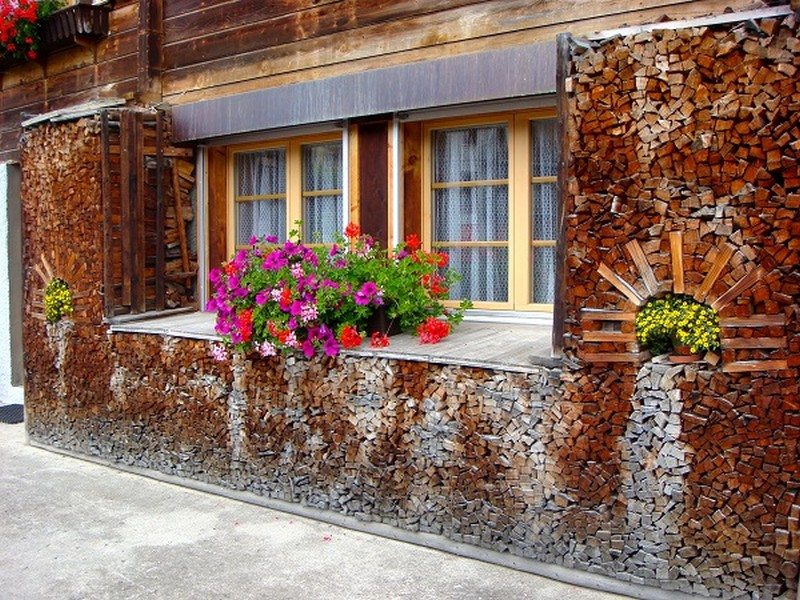
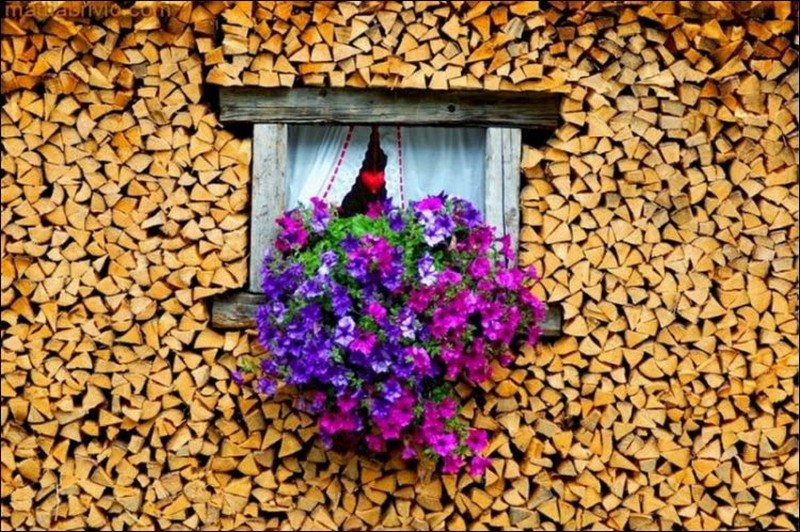
If you liked these, you will also like viewing these gardening ideas…
Pro Strategies for the Art of Wood Stacking
In the realm of woodworking, where creativity meets craftsmanship, the art of wood stacking stands as a testament to human ingenuity and the beauty of the natural world. From humble woodpiles to intricate sculptures, wood stacking offers endless opportunities for artistic expression and creative exploration.
Yet, mastering this ancient craft requires more than just stacking logs—it demands a deep understanding of materials, techniques, and design principles. In this guide, we’ll delve into the pro strategies for mastering the art of wood stacking, empowering artisans to create stunning compositions that captivate the imagination and inspire awe.
1. Selecting the Right Materials
At the heart of every art of wood stacking lies the choice of materials. Pro artisans understand that not all wood is created equal, and selecting the right species and quality of timber is crucial for achieving the desired result. Whether it’s the warm hues of cedar, the rugged strength of oak, or the elegant beauty of cherry, each type of wood brings its unique characteristics to the composition.
Consider factors such as grain pattern, texture, and durability when choosing materials, and opt for sustainably sourced wood whenever possible to minimize environmental impact.
2. Understanding Structural Principles
Successful art of wood stacking relies on a solid understanding of structural principles and engineering concepts. Pro artisans know that stability and balance are key to creating lasting compositions that withstand the test of time.
They carefully consider factors such as weight distribution, load-bearing capacity, and centre of gravity when designing their creations, ensuring that each log is positioned and aligned to maximize stability and minimize the risk of collapse. By applying principles of physics and mathematics, artisans can create intricate structures that appear to defy gravity while remaining structurally sound.
3. Embracing Creativity and Experimentation
While mastery of technique is essential, true innovation in the art of wood stacking comes from embracing creativity and experimentation. Pro artisans are not afraid to push the boundaries of convention and explore new ideas and techniques in their work.
They experiment with different arrangements, patterns, and compositions, allowing their imagination to guide them as they transform ordinary logs into extraordinary works of art. By embracing creativity and thinking outside the box, artisans can create compositions that surprise and delight viewers, sparking a sense of wonder and awe.
4. Attention to Detail
In the world of wood stacking, it’s the little details that make all the difference. Pro artisans understand the importance of attention to detail and strive for perfection in every aspect of their work. They carefully inspect each log for flaws, knots, and imperfections, selecting only the finest materials for their compositions.
They pay close attention to alignment, ensuring that each log is positioned with precision to create a sense of harmony and balance. From the smoothness of the surface to the intricacy of the joinery, every detail is meticulously crafted to create a composition that is as beautiful as it is functional.
5. Embracing Imperfection
While attention to detail is important, pro artisans also understand the value of embracing imperfection in their work. They recognize that wood is a natural material and that knots, cracks, and irregularities are part of its inherent beauty.
Rather than seeing these imperfections as flaws, they celebrate them as unique characteristics that add depth and character to their compositions. By embracing imperfection, artisans can create compositions that are rich in texture and visual interest, inviting viewers to appreciate the beauty of the natural world in all its diversity.
6. Continual Learning and Growth
Finally, mastering the art of wood stacking is an ongoing journey of learning and growth. Pro artisans understand that there is always more to discover, and they approach their craft with a sense of curiosity and openness.
They seek out opportunities to expand their skills and knowledge, whether through workshops, classes, or self-directed study. They draw inspiration from other artists and craftsmen, learning from their successes and failures alike. By remaining humble and open to new ideas, artisans can continue to evolve and refine their craft, creating compositions that push the boundaries of what is possible in wood stacking.
The Wrap Up
The art of wood stacking is a rich and rewarding pursuit, offering endless opportunities for creativity, innovation, and self-expression. By mastering the strategies outlined in this guide—selecting the right materials, understanding structural principles, embracing creativity and experimentation, paying attention to detail, embracing imperfection, and committing to continual learning and growth—artisans can create compositions that captivate the imagination and inspire awe.
So let us embark on this journey together, and may our creations stand as testaments to the beauty and power of the natural world.
Frequently Asked Questions
1. What is wood stacking, and how does it differ from traditional woodworking?
Wood stacking, also known as log stacking or timber stacking, is a technique used to create structures, sculptures, and artworks using stacked logs or timber. Unlike traditional woodworking, which typically involves shaping and joining pieces of wood to create furniture or decorative items, wood stacking relies on the natural form and texture of the timber itself.
It’s a versatile and intuitive practice that allows artisans to create compositions that range from rustic and utilitarian to elegant and artistic.
2. What are some common types of wood stacking projects?
Wood stacking projects come in many shapes and sizes, ranging from simple woodpiles and log cabins to elaborate sculptures and architectural installations. Some common types of wood stacking projects include:
- Log cabins: Traditional structures built using stacked logs, often with interlocking corners and notched joints.
- Sculptures: Artistic compositions created by stacking logs in creative arrangements, often incorporating elements of balance and symmetry.
- Garden features: Functional and decorative structures such as fences, trellises, and raised planters made from stacked timber.
- Outdoor artworks: Large-scale installations and sculptures designed to complement and enhance outdoor spaces, such as parks, gardens, and public plazas.
3. What tools and equipment are needed for wood stacking?
The tools and equipment needed for wood stacking projects vary depending on the size, complexity, and type of project. Some common tools and equipment include:
- Chainsaw: Used for cutting logs and timber to size, shaping them as needed, and removing bark and other imperfections.
- Axe or hatchet: Used for splitting logs and shaping them into desired forms, such as notches, grooves, and tenons.
- Hammer and nails: Used for securing logs and timber together, as well as attaching decorative elements and finishes.
- Level and measuring tape: Used for ensuring that logs are stacked evenly and accurately, maintaining structural integrity and visual balance.
- Safety gear: Personal protective equipment such as gloves, goggles, and hearing protection, used to prevent injury while working with power tools and heavy timber.
4. What are some tips for beginners interested in trying wood stacking?
For beginners interested in trying wood stacking, here are some tips to keep in mind:
- Start small: Begin with simple projects, such as a small woodpile or garden planter, to gain experience and confidence before tackling larger projects.
- Choose the right materials: Select high-quality logs and timber that are free from defects and suitable for the intended purpose of the project.
- Plan carefully: Sketch out your design and plan the layout of your project, considering factors such as size, shape, and placement of logs.
- Practice safety: Always follow safety precautions use proper safety gear when working with power tools and heavy timber, and seek guidance from experienced woodworkers if needed.
- Embrace imperfection: Remember that wood is a natural material with its quirks and imperfections, and embrace these unique characteristics as part of the beauty of your finished project.






